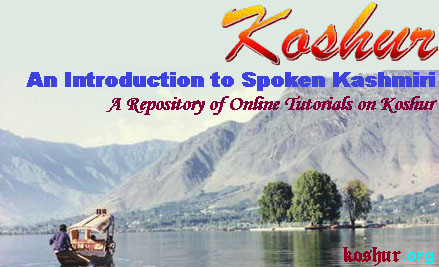Languages
Kashmiri, popularly known as Koshur, is an Indo-Aryan language. Even the opponents of this linguistic classification of this language, grouped it with Dardi, Shrinya, Khowar dialects, which are spoken in the areas adjacent to the valley in its north and north-west. Language historians and linguists have often, however, concurred on the theory that the above-mentioned dialects fall in the category of languages that bear resemblance to the Indo-Aryan as well as to the Indo-Iranian languages.

Oh Goddess Sharada (Sarasvati), resident of Kashmir, I bow down to thee.
I pray to you to give me the gift of knowledge.
Philologists believe that like the earliest Naga inhabitants of the mountains of Kashmir having been cut off from the mainstream Aryans like their counterparts (viz. the Ghandarvas, the Yakshas, the Kinnaras etc.), their language took time to accept influences and merge with the main Aryan languages. The Naga language developed of its own and underwent changes natural to any language. All the same it maintained its peculiar vowel system and when it surfaced in the 8th-9th century AD, it had passed through all the stages of the Prakrits and Apabhrams has like other modern Indian languages, the earliest available evidence of the Kashmiri language belongs to this period.
Understanding the complex dynamics of language development in a multi-lingual State like Jammu and Kashmir, is not only a challenging task but also important for creating informed opinion about the status of languages and their role in identity formation. Often described as a three-storeyed edifice founded upon bonds of history and geography and linked by a common destiny, the J&K State presents a fascinating mosaic of cross-cultural interaction.

ammu, Kashmir & Ladakh:
Ethno-Linguistic Areas
(Not to scale)



